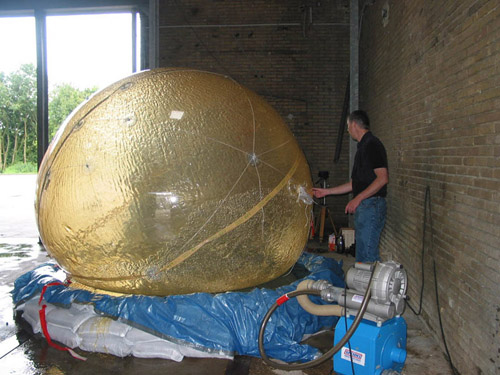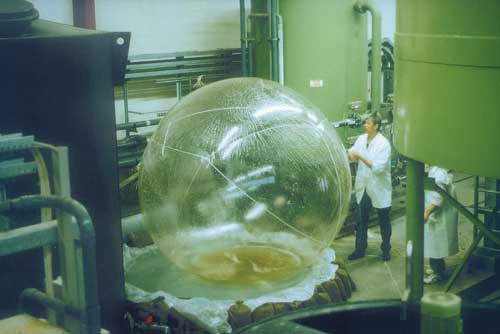Liquid and congealed membranes
Spatium Gelatum technology studies the rules for forming liquid and gelling objects from biological polymers. Polymers in a liquid state were used in the research. The technology uses the ball bearing principle to rotate the liquid mass in flexible, sphere-shaped forms (plastic spheres and PVC balloons). The sphere-like shape of the forms enables rotation within the liquid.
The pumped up form floats in a pool filled with water whilst the liquid polymer mass is pumped inside it. As the object is rolled on the surface of the water, the liquid polymer inside it is mixed. As it cools the mass converts into gel state, settles on the surface and forms a congealed layer. After this layer has set, air is pumped into the form and the polymeric mass begins to congeal and solidify.
During the drying process the form hardens and changes its shape whilst the amorphous structures and layers on the surface reinforce the construction of the crust.
The goal of the study is to shape biological forms and objects into new habitats. Spatium Gelatum objects are biologically renewable. They can exist in a solid or liquid state, be soft or hard and transparent or coloured, as well as having different smells and flavours.

